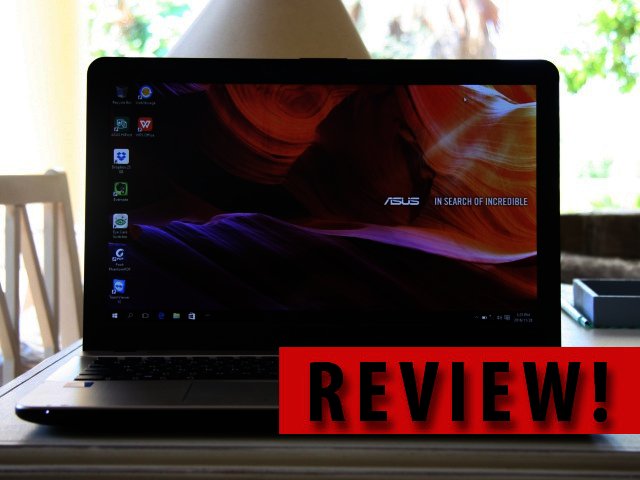For consumers looking at entry-level offerings, price is often the largest consideration of all. The VivoBook Max (X541SA) from Asus embodies that ideal, but should not be overlooked as a simple cheap and cheerful option, as its Taiwanese manufacturer has added a handful of extras to up the value for money prospect.
Heavyweight contender
While Asus has done its best with the VivoBook Max given its R4 600 (RRP) price tag, there is one aspect of this device that is unmistakably entry-level in nature - an all too plastic feel.
This is exacerbated by the heft of the VivoBook Max, which tips the scale at 2 kg, which is substantial even by 15.6" notebook standards. Given its dimensions and weight, this is the type of notebook you're going to want to keep deskbound, and does not fare well at being lugged around when travelling.
To make it look more appealing, the lid of the VivoBook Max features a faux brushed metal design on its hardened plastic, with the vertical lines etched in. It adds a degree of texture to the notebook, and even from a distance makes it look far more premium than its sub-R5K price tag suggests.
Touch and feel
Now that I've addressed some of the more superficial issues I have with the VivoBook Max, let's delve a bit deeper. The aforementioned 15.6" display is HD in nature and serves up a 1366x768 resolution. For the most part, it gets the job done, with clarity fairly solid throughout every square inch of the screen.
Also adequate is the keyboard and trackpad. The chiclet keys are large, but provided a less pleasant typing experience than expected. This is because each key press felt a bit hollow, with very little feedback or feel from the keyboard. For those coming to grips with a keyboard it's fine, but for experienced touch-typers it will not provide a satisfying experience.
Moving onto the trackpad, it suffers from many of the ailments one encounters with an entry-level notebook, namely having to use one's finger multiple times on the trackpad when scrolling or moving the cursor from one corner of the screen to the other.
Surprising specifications
Up until now, the VivoBook Max has not stood out much, but when it comes to the specifications, it begins to show its value. Although a dual-core Intel Celeron 2.48 GHz processor is doing the heavy lifting, this notebook is relatively speedy. There's no abnormally long wait between opening up and closing applications, and Windows 10 (64 bit) tools are equally responsive when prompted. All in all, if you need the basics taken care of, the VivoBook Max is up to the task.
Looking at other specs, there is 4 GB DDR3 RAM and 500 SATA GB of onboard HDD storage. Added to this is a 36 Whrs battery that ably yields a full working day (8 hours) under mixed use. Also on offer are a number of ports, with a trio USB ones available, serving up a single 2.0, 3.0 and Type-C slot when required. This is particularly helpful if you've got different types of devices, specifically Android smartphones and dongles in rotation.
Final verdict
For R4 600 you get what you pay for in the Asus VivoBook Max (X541SA), which is a large entry-level notebook that ticks all the necessary boxes that users aiming to do a handful of tasks are looking for. At 15.6" and 2 kg (with battery), it's not on the svelte side, which means university students will likely shy away from it. If, however, you're looking for a basic family notebook, or do simple things like web browsing for projects, it's more than up to the task.





